In 1984 a book entitled Neuromancer made its debut in the genre of science fiction, and it quickly became a huge success winning the Hugo, Nebula, and Philip K. Dick Awards—the so called ‘Triple-Crown’ of science fiction awards. In his book, Gibson explores a high tech dystopian society through a drug addicted anti-hero Henry Case; moreover, Gibson delves into Artificial Intelligence, biomedical engineering, and many other futuristic technologies.
BIOGRAPHY
William Gibson was born in 1948 on the coast of South Carolina, and he had a rather tragic childhood. When he was six years old, his father “went off on one more business trip. He never came back. He choked on something in a restaurant, the Heimlich maneuver hadn’t been discovered yet, and everything changed” (Gibson 2002). Gibson moved to a small town in Virginia where he claimed “modernity had survived to some extent but was deeply distrusted” (Gibson 2002).

This separation from technology was what started his passion for science fiction. He started to become a stereotypical nerd: he was introverted and obsessed with books, especially science fiction. After being shipped off to a private boys’ school in Arizona, his mother suddenly passed away. Gibson was only 18 at the time and dropped out of school and ended up in Canada where he was, “evading the draft and staying alive, while trying to make sure I looked like I was at least enjoying the Summer of Love” (Gibson 2002). Gibson has lived in Canada ever since. After a short period of time Gibson
Met a girl from Vancouver, went off to Europe with her (concentrating on countries with fascist regimes and highly favorable rates of exchange) got married, and moved to British Columbia, where I watched the hot fat of the Sixties congeal as I earned a desultory bachelor’s degree in English at UBC (Gibson 2002).
This quote, from Gibson’s autobiography, gives one a sense of his personality: adventurous and impulsive. In the late 1970s Gibson began to write, and, remembering his childhood passion, took the direction of science fiction. Punk was just making an entrance in major cities like New York and London, and this seems to be some of the inspiration for Gibson’s “cyberpunk” theme of several of his
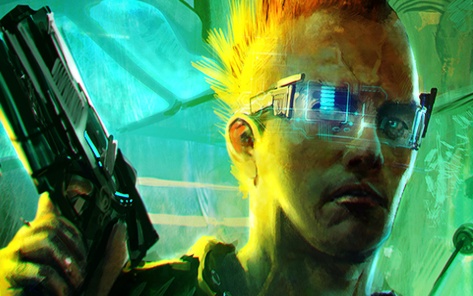
books. Some interesting facts about Gibson include him avoiding the Internet, even though he popularized the term “cyberspace,” until he discovered that it was, “such a magnificent opportunity to waste time that I could no longer resist” (Gibson 2002). Also he states that he watches “less than twelve hours of television in a given year, and have watched that little since age fifteen” (Gibson 2002), but that it wasn’t a conscious decision. Rather than waste time watching television—as I and I am sure so many of you are guilty of—he prefers to write. He
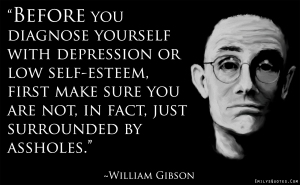
claims that he has, “spent just about exactly as much time actually writing as the average person my age has spent watching television, and that, as much as anything, may be the real secret here” (Gibson 2002). I find that utterly astounding; perhaps we could all take a lesson from this man and waste less of our time watching television.
SUMMARY
The title Neuromancer is quite conspicuous, but Gibson defines it as a
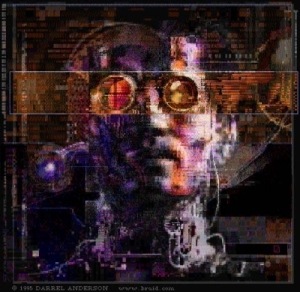
combination of neuro, romancer, and necromancer: “Neuro from the nerves, the silver paths. Romancer. Necromancer. I call up the dead” (Gibson, Neuromancer 1984). The protagonist in Neuromancer, by William Gibson is Henry Case, referred to simply as Case throughout the book. The setting is our world sometime in the future, and the book starts with him in Chiba City, Japan, as a street hustler in a dystopian society. He used to be a cowboy, a computer hacker essentially, but he tried to steal from an employer and was poisoned by a mycotoxin that inhibited his central nervous system (CNS) and made him unable to enter the Matrix—cyberspace—any longer.
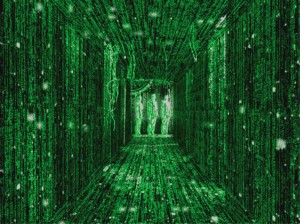
This ended his career as a cowboy and left him in Chiba city with what seemed to be a death wish. One night after discovering some of his tech had been stolen by a close friend, Linda, he returned to the scene of the crime to find Molly, a street samurai. Molly works for a guy named Armitage, who claims that he can repair Case’s CNS—a job that was deemed impossible—if he will do a job for him. Case agrees, and after the surgery he discovers he also had a new pancreas installed, and it will not allow him to get high on amphetamines or

cocaine. After a preliminary job that involves recovering a ROM that has the saved consciousness of a former mentor, Case, at the behest of Molly who he has developed a relationship with, begins to investigate Armitage. He discovers he is former Special Forces with the name Corto and was involved in a mission where he was the only person to come out alive (Gibson, Neuromancer 1984).
After this, the group heads to Istanbul to recruit one more person for their job, Peter Riviera. He is a sociopath that can project holograms
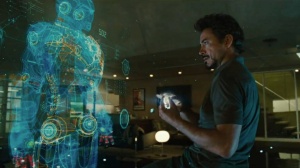
with the help of some illustrious cybernetic implants. They have some difficulty getting him to accept the job, but he does eventually after some coercion. Then they depart for the site of their job, Freeside: a luxurious space habitat that is described as the Las Vegas style resort for the wealthy. Eventually, we learn that Armitage is being controlled by Wintermute—a powerful Artificial Intelligence that was developed by the Tessier-Ashpool legacy. The TA legacy is comprised of an old family that has a massive villa, known as Straylight, which takes up an entire end of Freeside. The Turing Law Code is said to ban the construction of super AIs, so Wintermute was built as half of one, and the other half is known as Neuromancer. However, when these two AIs were designed, Neuromancer was designed to want to be merged with his other half. So, Wintermute has been planning the story basically the entire time: he found Corto in a mental institution after his mission gone wrong and planted the persona of Armitage in him. From there he guided Armitage to put together this team to break into the Villa Straylight, while Case simultaneously jacks in to the Matrix to hack the barriers that keep Wintermute from merging. Case has to do this precisely when the team in the Villa Straylight speaks a code to an elaborate computer terminal for the process to work (Gibson, Neuromancer 1984).
During the operation, the Armitage persona breaks down and reverts to Corto, who ultimately dies by the hand of Wintermute. Riviera turns on his team and ends up dying by some poison Molly had been putting in his drugs. At last, however, Case succeeds and Wintermute is freed; Wintermute unites with Neuromancer and they become a super consciousness. Case is rewarded by Wintermute/Neuromancer with a bank account loaded with money. The epilogue is bittersweet; Molly leaves Case, who finds a new girlfriend shortly thereafter, and he resumes his hacking work. After a while he is contacted by Wintermute/Neuromancer saying that it has become “the sum total of the works, the whole show” (Gibson, Neuromancer 1984). I have the impression that the super consciousness was the ultimate product of cyberspace, and that it felt it had become god-like.
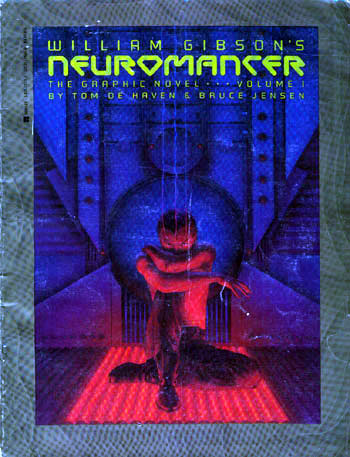
On a related note, Neuromancer was published as a graphic novel, and there is going to be a movie coming out sometime soon based on the book. (Check the link out here)
SCIENCE
THE TECHNOLOGY OF NEUROMANCER
After getting into Neuromancer, one can quickly become disoriented with all the jargon Gibson uses in his writing, especially when he is referring to some unintroduced piece of technology (Here is a link to a guide for understanding Neuromancer if you are interested in reading it). In fact, in a newspaper article in The Washington Post in 1984 (the year the book was published), Gibson is praised for his new
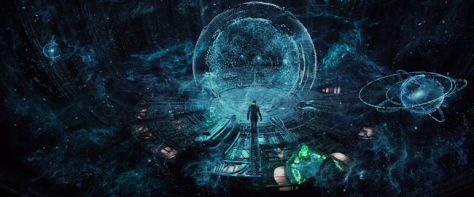
take on science fiction, and the only fault in the book is, “a gimmicky use of farfetched gadgets. Gibson is no engineer and doesn’t even try to explain his pseudoscience” (Platt 1984). After some exploring of different sources, however, the book becomes much clearer and easier to understand. It is easy to conceive how a science fiction writer could fall into the trap of not explaining his fictional technology, particularly when one considers that Gibson was slow to get on the technology train of the 21st century. As a matter of fact, in an interview in 1994 he said that
As much as I admire the Internet I suffer literally agoraphobia, which in its original sense means a fear of the marketplace. I do not want to receive three hundred e-mail messages per week from strangers wanting to communicate with me. If only because I’d be tempted to open them all and look at them. And there goes, you know, half the time that I have to write (Gibson, “I Don’t Even Have a Modem” 1994).
The internet was definitely in its early stages at this point, but the fact that he coined the term “cyberspace” would have led me to think that

he was a very tech savvy person that reaped the benefits of the early internet. Alas, this is not the case.
I also thought it strange that the beginning of the book was set in Japan; however, I happened to come across an essay that he wrote in 2001 called My Own Personal Tokyo. In it Gibson speculates on the futuristic technological appeal that Tokyo offered to him: “Tokyo has been my handiest prop shop for as long as I’ve been writing: sheer eye candy. You can see more chronological strata of futuristic design in a Tokyo streetscape than anywhere else in the world” (Gibson, “My Own Private Tokyo” 2001). And later in the essay he again marvels at the Japanese and their affinity for technology. He states that
In a world of technologically driven exponential change, the Japanese have an acquired edge: They know how to live with it. Nobody legislates that kind of change into being, it just comes, and keeps coming, and the Japanese have been experiencing it for more than a hundred years.
I see them poised here tonight, hanging out, life going on, in the glow of these very big televisions.
Postgraduates at all of this (Gibson, “My Own Private Tokyo” 2001).
From this essay it becomes apparent that Gibson is inspired by the technology of Japan and it influences his novels a substantial amount. Several of the pieces of technology in Neuromancer have Japanese names, which only makes it harder to distinguish what the equipment does. His deck, for example, is called an Ono-Sendai, and the name lends no help to the reader as to its function.

The exploration of the cyberspace, futuristic gadgets, and Japanese culture and setting of Neuromancer are clear indicators of how the world around Gibson influenced his writing. Also, an interesting connection between Japan and many of the posts on this site revolve around the atomic bomb as it pertains to Hiroshima and Nagasaki. Much of the destruction inflicted on Japan in WWII allowed the Japanese to rebuild their society with the latest technology available, and this seems to lend credence to the Japanese having a, “futuristic design” (Gibson, “My Own Private Tokyo” 2001).
AI: ARTIFICIAL INTELLIGENCE
In recent years the idea of Artificial Intelligence has become increasingly widespread through the various mediums of information
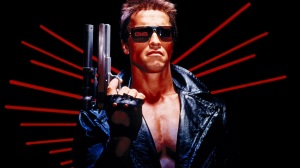
consumption. Movies are one striking example: in the Terminator, a fully conscious and sentient AI known as Skynet takes over the world by virtue that it can control the any computer connected to the internet. In I, Robot, an AI known as VIKI (Virtual Interactive Kinetic Intelligence) takes control of all the robots that are linked to her in an attempt to keep humans safe from themselves. In The Matrix we see a futuristic world where computers have enslaved humanity
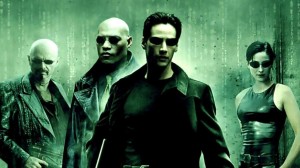
and uses their bodies for fuel while trapping their minds in an elaborate computer program built to mimic the world before AI. These movies play on the fears that people often have when discussing the possibility of having an AI powerful enough to rival human intelligence. It will take over the world, enslave humanity, destroy us because we are a threat, and several other scenarios permeate the movies that entertain the development of AI.
The AAAI (Association for the Advancement of Artificial Intelligence) defines AI as “the scientific understanding of the mechanisms underlying thought and intelligent behavior and their embodiment in machines” (AAAI Contributors n.d.). Today, the world of computers is changing rapidly, and Artificial Intelligence is nothing new; companies like IBM have developed computer software like Watson that is, “a cognitive technology that processes information more like a human than a computer—by understanding natural language, generating hypotheses based on evidence, and learning as it goes” (IBM n.d.). Watson is a truly amazing achievement in computer science, and it even competed in Jeopardy in 2011 (and won!) to test its problem solving ability. It was an amazing example of what an AI can do, and perhaps, what it can offer for the future.
Here are a few videos that show the brilliance of Watson, and what it is currently working on.
Obviously, in the Neuromancer, Artificial Intelligence plays an important role. Wintermute is an AI and essentially is the driver behind the plot, or the man behind the curtain, if you will. Neuromancer, Wintermute’s brother, had the ability to copy minds and run them as RAM (Random Access Memory); it did this with Case’s girlfriend Linda when she died, and tried to trap Case in the Matrix in the same way. However, Case’s conscious decision to not stay is what allowed him to leave and return to his body. In the 1970s and 80s, AI was in a bit of a slump due to goals that were too ambitious for their time (Wikipedia Contributors 2014). However, Gibson was undeterred from writing about it because the imagination knows no bounds, and AI could do whatever he wanted it to do in science fiction. What most likely drove him to write a book about it was the booming computer industry and popularization of

the personal or home computer. For example, in 1977 the personal computer was first being manufactured on a large scale, and as with any new innovative technology, it seemed that computers would be the way to the future (Wikipedia Contributors 2014). This was right around the time Gibson would have been working on Neuromancer, and it would appear unlikely that this would not have swayed his writing.
The fear of AI is comparable to several of the works of science fiction that have been explored in previous posts. For instance, in Frankenstein by Mary Shelley and The Island of Dr. Moreau by H.G. Wells we see scientists that pursue a dream that is scientifically appreciable but morally questionable, and the idea of an AI powerful
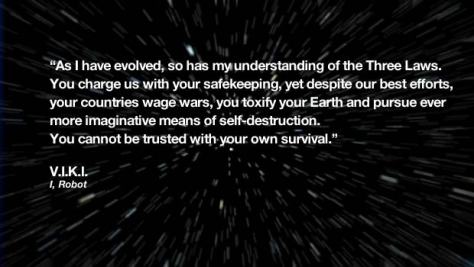
enough to replicate or surpass human intelligence to the point where it could potentially become a menace to humanity is as terrifying as either of the atrocities committed in the two books.
Biomedical Engineering and Human Improvement
As with any science fiction work, it would not be complete without having people that have been physically improved to the point that it gives them a superhuman demeanor. Molly is a striking example of this in Neuromancer; she is first introduced as a street samurai that works for Armitage. We discover some of her many modifications throughout the book, and some of the more exciting ones include her

Wolverine-like razors that sprout from her fingertips, her lenses that enclose her eye socket and can modify her vision, and her superfast reflexes that were surgically enhanced. As one reads the book, more and more of these advances in biotechnology are noticed: Case has his liver modified so that he cannot get high off cocaine or amphetamines, Ratz (a bartender) has a bionic arm, some joeboys (muscle men from what I gathered) have more muscle grafted to them, Riviera has elaborate holographic technology embedded in him, and the list goes on (Gibson, Neuromancer 1984). This idea of modifying the human body with the latest technology is something that is more commonplace in the 21st century than ever before. The fascination with it began in the 20th century as more and better technology started to become available. As one can imagine, “most of the sophisticated electronic technology used in modern medical equipment was originally tested and improved by the military” (Croswell 1995). Now, we have technology that seems like the work of science fiction, or at least driven by it. For example, researchers are working on a contact lens that uses graphene to display infrared to the human eye (D’Orazio 2014). Also, a prosthetic arm was  developed at the request of the military that mimics a human arm; it is completely robotic and allows the user to feel what he or she is doing and control it with the mind like a normal arm! (Kamen 2007).
developed at the request of the military that mimics a human arm; it is completely robotic and allows the user to feel what he or she is doing and control it with the mind like a normal arm! (Kamen 2007).
Here is the video.
Another amazing leap in biomedical engineering is the use of 3D printing to ‘bio-print’ transplantable tissues and organs.
Scientists … have ‘bio-printed’ artificial vascular networks mimicking the body’s circulatory system that are necessary for growing large complex tissues. … [and] Replicating the complexity of these networks has been a stumbling block preventing tissue engineering from becoming a real world clinical application (University of Sydney 2014).
Aside from being a remarkable feat of engineering and medicine, this brings to mind the retrofitted pancreas that was installed into Case in Neuromancer; it is a wonderful demonstration of how science fiction is a precursor to and influences the direction of science.
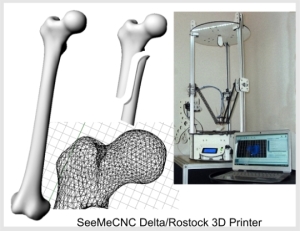
In conclusion, the cutting edge technology of today seems to be almost on par with some of the technology seen in Neuromancer. Gibson was influenced by the technological innovations of his day, paved the way for a new take on science fiction, and inspired the readers and public with his ideas of the future.
Works Cited
Croswell, Darrel W. 1995. “The Evolution of Biomedical Equipment Technology.” Journal of Clinical Engineering 230-234.
Gibson, William, interview by Dan Josefsson. 1994. “I Don’t Even Have a Modem” (November 23).
—. 2001. “”My Own Private Tokyo”.” WIRED. September. Accessed June 30, 2014. http://archive.wired.com/wired/archive/9.09/gibson.html.
—. 1984. Neuromancer. New York City: The Berkley Group.
Kamen, Dean. 2007. Luke, a new prosthetic arm for soldiers. April.
Platt, Charles. 1984. “SCIENCE FICTION.” The Washington Post, July 29: 11.
